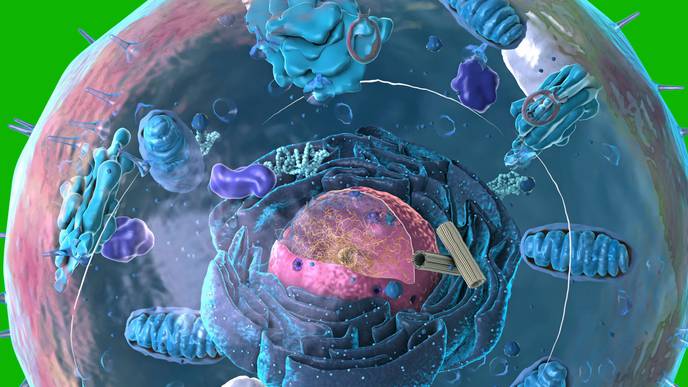Mitochondria Pore Emerges as Potential Key to Managing Muscular Dystrophies

08/28/2023
image: Muscle tissue damage appears when muscular dystrophy is induced in a mouse model (Middle). But muscle tissue closely resembles normal tissue when the mouse model lacks two genes that control mitochondrial pore formation (right).view more
Credit: Cincinnati Children's
Ever since the Jerry Lewis telethons began in the 1960s, millions of people have become familiar with an otherwise rare disease called muscular dystrophy (MD).
The medical world has learned much over the ensuing years, including that more than 30 closely related disorders exist that can produce the gradual muscle degeneration that steals a child’s ability to walk and eventually disrupts other organ functions. An estimated 250,000 people in the U.S. are living with a muscular dystrophy. While many are living longer lives thanks to improved treatments, no cure has been found.
Now an eye-opening study led by scientists at Cincinnati Children’s--published Aug. 25, 2023, in Science Advances--reports an entirely new approach to preventing the muscle-wasting symptoms of MD. The research focuses on the role played by mitochondria, the tiny organelle within our cells that processes nutrients into the energy cells need to survive.
“We have isolated the primary disease-causing component of muscular dystrophy to the mitochondrial permeability pore,” says the study’s corresponding author Jeffery Molkentin, PhD. “If we prevent this pore from functioning, dystrophic disease in the mouse models we studied almost completely vanishes. We see the protection lasting past one year of life in the mouse, which translates to about 40 years of life for a human.”
Molkentin is a widely respected expert in the basic science of muscle cell function and formation. He is co-executive director of the Heart Institute at Cincinnati Children’s and director of its Division of Cardiovascular Biology. He has studied muscular dystrophies for over 20 years.
Molkentin cautions that this discovery was achieved by observing outcomes in mice that were genetically modified to lack two genes that control mitochondrial permeability transition pore (MPTP) formation. Much more research beyond this early success will be needed to develop a safe and effective treatment for people with MDs.
Mitochondria take center stage
Mitochondria organelles are surrounded by their own membrane. However, when exposed to oxidative stress or a pathologic overload of calcium ions (Ca2+) mitochondria open a pore in their protective membrane. The influx of excess calcium causes the organelle to burst, which in turn causes muscle fibers to die, eventually leading to wasting of entire muscle groups.
This process of mitochondrial pore-regulated cell death has been observed in other conditions including heart muscle damage after heart attacks and neurodegenerative diseases including Huntington’s disease, Alzheimer’s disease, and amyotrophic lateral sclerosis (ALS).
In this study, Molkentin and colleagues reveal the mechanisms at work when this mitochondria-destroying process occurs in MDs. The team determined that two genes in mice—Slc25a4 and Ppif—work in concert to mediate unwanted pore formation. Controlling either one by themselves only slowed MD progression, but the absence of both together stopped it.
“We found direct evidence that these genes produce required components that govern cell death, which opens a previously unrecognized pathway for potentially treating MDs and other necrotic diseases,” Molkentin says.
Challenges ahead
Developing a medication to protect mitochondria in muscle cells will require much more study, Molkentin says.
The mouse gene Ppif produces a protein called CypD. Researchers established years ago that the immune-suppressing drug cyclosporin A can block this protein, but long-term use of the drug at high doses poses significant risk of side effects. In MD, the drug only mildly slows the disease in animal models.
Meanwhile, the mouse gene Slc25a4 encodes a protein called ANT1. There are no medications that target this protein. The existing compounds known to bind with this protein are fatally toxic, so new compounds would be needed.
“If a nontoxic ANT inhibitor can be identified, that also can target the mitochondrial pore, our results suggest that combined treatment with low dosages of a CypD inhibitor could be a novel therapeutic strategy,” Molkentin says. “Such a treatment could provide benefits independently or in combination with other gene therapies.”
Would such a treatment “cure” muscular dystrophy? It’s too soon to say. This study focused exclusively on skeletal muscle. More research would be needed to determine if the mitochondria-protecting approach also would protect against MD-related heart damage or other organ dysfunctions.
About this study
In addition to Molkentin, Cincinnati Children’s researchers involved in this study included first author Michael Bround, PhD, and co-authors Julian Havens, BS, Allen York, BS, and Michelle Sargent, BS. Jason Karch, PhD, from Baylor College of Medicine also was a co-author.
Funding sources included the National Heart, Lung, and Blood Institutes (R01HL132831 and R01HL150031), the National Institute of Arthritis and Musculoskeletal and Skin Diseases (K99AR078253), the L. B. Research and Education Foundation, and the Leducq Foundation.
About Cincinnati Children’s
Cincinnati Children’s is a nonprofit, comprehensive pediatric health system. As a leader in research, education, patient care, advocacy and innovation, Cincinnati Children’s is ranked #1 in U.S. News & World Report’s 2023-2024 list of best children’s hospitals in the nation and is the #2 recipient of pediatric research grants from the National Institutes of Health. Cincinnati Children’s is internationally recognized for improving child health and transforming delivery of care.
Method of Research
Experimental study
Subject of Research
Animal tissue samples
Article Title
ANT-dependent MPTP underlies necrotic myofiber death in muscular dystrophy
Article Publication Date
25-Aug-2023
COI Statement
Authors declare no competing interests
Disclaimer: AAAS and EurekAlert! are not responsible for the accuracy of news releases posted to EurekAlert! by contributing institutions or for the use of any information through the EurekAlert system.

Facebook Comments